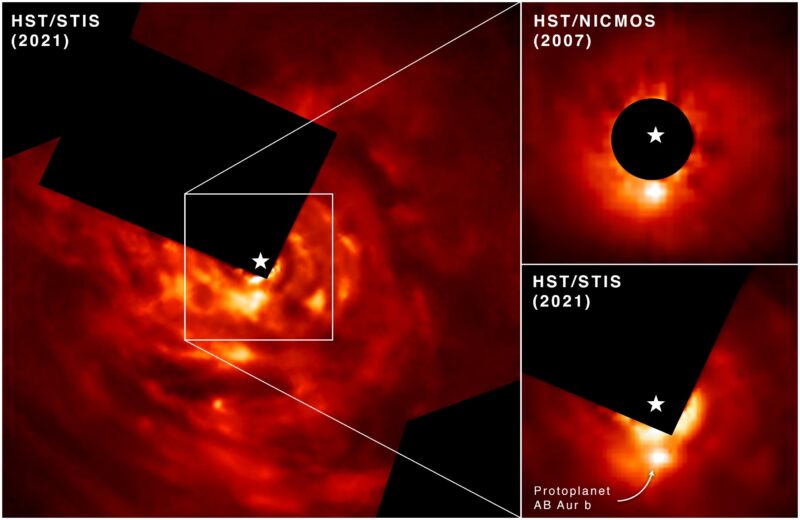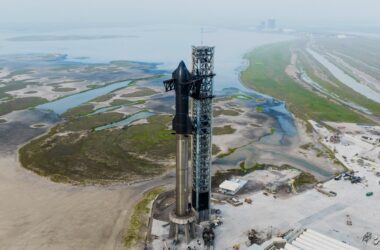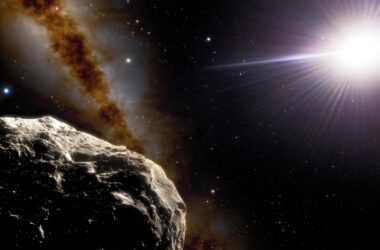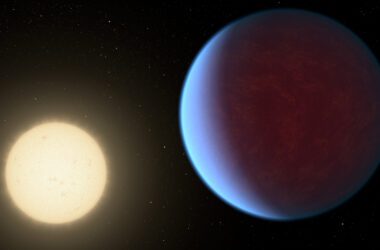
Les chercheurs ont pu photographier directement l’exoplanète AB Aurigae b en formation sur une période de 13 ans à l’aide du spectrographe imageur du télescope spatial (STIS) et de la caméra infrarouge proche et du spectrographe multi-objets (NICMOS) de Hubble. En haut à droite, l’image NICMOS de Hubble capturée en 2007 montre AB Aurigae b dans une position plein sud par rapport à son étoile hôte, qui est couverte par le coronographe de l’instrument. L’image prise en 2021 par STIS montre que la protoplanète s’est déplacée dans le sens inverse des aiguilles d’une montre au fil du temps. Crédit : Science : NASA, ESA, Thayne Currie (télescope Subaru, Eureka Scientific Inc.) ; Traitement des images : Thayne Currie (Télescope Subaru, Eureka Scientific Inc.), Alyssa Pagan (STScI).
Le ;” data-gt-translate-attributes=”[{” attribute=””>NASA/ESA Hubble Space Telescope has directly photographed evidence of a Jupiter-like protoplanet forming through what researchers describe as an “intense and violent process.” This discovery supports a long-debated theory for how planets like Jupiter form, called “disk instability.”
The new world under construction is embedded in a protoplanetary disk of dust and gas with distinct spiral structure swirling around surrounding a young star that’s estimated to be around 2 million years old. That’s about the age of our solar system when planet formation was underway. (The solar system’s age is currently 4.6 billion years.)
Researchers were able to directly image newly forming exoplanet AB Aurigae b over a 13-year span using the Hubble Space Telescope Imaging Spectrograph (STIS) and its Near Infrared Camera and Multi-Object Spectrograph (NICMOS).
In the top right, Hubble’s NICMOS image captured in 2007 shows AB Aurigae b in a due south position compared to its host star, which is covered by the instrument’s coronagraph. The image captured in 2021 by STIS shows the protoplanet has moved in a counterclockwise motion over time.
For more on this discovery, see Hubble Finds a Massive Planet – 9 Times the Size of Jupiter – Forming Through a Violent Process.
Reference: “Images of embedded Jovian planet formation at a wide separation around AB Aurigae” by Thayne Currie, Kellen Lawson, Glenn Schneider, Wladimir Lyra, John Wisniewski, Carol Grady, Olivier Guyon, Motohide Tamura, Takayuki Kotani, Hajime Kawahara, Timothy Brandt, Taichi Uyama, Takayuki Muto, Ruobing Dong, Tomoyuki Kudo, Jun Hashimoto, Misato Fukagawa, Kevin Wagner, Julien Lozi, Jeffrey Chilcote, Taylor Tobin, Tyler Groff, Kimberly Ward-Duong, William Januszewski, Barnaby Norris, Peter Tuthill, Nienke van der Marel, Michael Sitko, Vincent Deo, Sebastien Vievard, Nemanja Jovanovic, Frantz Martinache and Nour Skaf, 4 April 2022, Nature Astronomy.
DOI: 10.1038/s41550-022-01634-x



